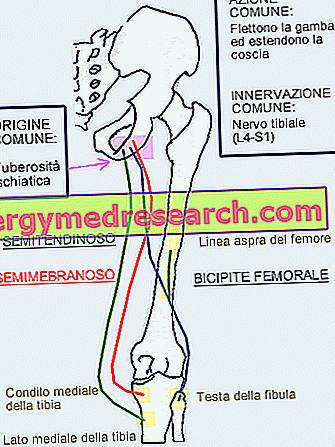Edited by: Francesco Currò
In setting up a training it is often necessary to take into account two needs: that of the multilaterality of the stimuli and that of the progression of the load. However, it often happens that these needs are opposed because of the specificity of the adaptation: how many of you - for example - will have noticed that you have lost "resistance" after a cycle of force?
Many authors have developed different strategies to get around the problem very well. What I wish to illustrate in this article has probably even been codified in the so-called "weider principles" and is called "eclectic training".
The structure of such training is rather linear and - for each muscle group - it consists in selecting a "main" exercise to concentrate on the progression of the load and a certain number of "support" exercises to alternate gradually between them.
For the "main" exercise, one could for example perform 5 series with constant repetitions and with gradually increasing loads; in practice, the goal will be to be able to do 6 repetitions in the last series. Please note that the series preceding the last one, however, are of "preparation / heating" (so they will not be too heavy). For example, if in the last series of the exercise you will have to perform 6 repetitions with 100 Kg, you will proceed as follows:
First series: Second series: Third series: Fourth series: Fifth series: | six repetitions with 60 Kg six repetitions with 70 Kg six repetitions with 80 Kg six repetitions with 90 Kg six repetitions with 100 Kg |
As you can understand, the last series is our "control" of the progression, so if you feel like doing more than six repetitions you don't have to stop at six, but you need to go to the limit. In this way, when in a given training you are able - in the last series - to perform more than six repetitions, in the following training the loads are updated, increasing them by a few Kg.
As anticipated above, the "main" exercise will be followed by "support" exercises that will gradually vary, in which the repetitions and intensity techniques to be adopted will be changed from time to time.
To better clarify what we have just reported, here are some examples (for chest and biceps)
.
Muscle group: Pectorals
Selected "main" exercise: Flat bench extensions
"Support" exercises to be alternated between training in training: inclined bench crosses, dumbbell distances on an inclined bench, dumbbell extensions on a sloping bench, crosses with cables on an inclined bench, parallel
Training n.
Horizontal bench press: 5 sets of 6 Repetitions "with increasing loads"
Distension with dumbbells on an inclined bench: 3 sets of 10 Repetitions [rest 90 "]
Training n. 2
Horizontal bench press: 5 sets of 6 Repetitions "with increasing loads"
Distension with dumbbells on a bench: 4 sets of 6 Repetitions [rest 120 "]
Training n. 3
Horizontal bench press: 5 sets of 6 Repetitions "with increasing loads"
Crosses with cables on an inclined bench: 4 sets of 10 Repetitions [rest 60 "] apply the principle of maximum contraction
Training n. 4
Horizontal bench press: 5 sets of 6 Repetitions "with increasing loads"
Crosses on cables on inclined bench: 3 sets of 8 Repetitions [rest "zero"] in supersets with the following exercise
Parallel: 3 series of 6 Repetitions [rest 150 "] in superset with the previous exercise
Muscle group: Biceps
"Main" exercise chosen: Curl with barbell
"Support" exercises to be alternated from training to training: scott bench curl with angled barbell, curl with inclined bench, curved "concentrated" curl with hammer handle.
Training n.
Curl with barbell: 4 sets of 6 Repetitions "with gradually increasing loads"
Scott bench seat curl with angled barbell: 3 sets of 10 Repetitions [rest 75 "]
Training n. 2
Curl with barbell: 4 sets of 6 Repetitions "with gradually increasing loads"
Curl with inclined handlebars: 3 sets of 6 Repetitions [rest 90 "]
Training n. 3
Curl with barbell: 4 sets of 6 Repetitions "with gradually increasing loads"
"Concentrated" curls: 3 series of 10 Repetitions [rest 60 "] apply the principle of maximum contraction and possibly add a forced repetition
Training n. 4
Curl with barbell: 4 sets of 6 Repetitions "with gradually increasing loads"
Curl with hammer handle: 3 sets of (6 + 6 + 6) Repetitions [rest 150 "] stripping technique
Is this setting really not interesting? On the one hand, progression is respected and on the other, stimuli can be varied. And with an absolutely not negligible advantage: you won't get bored!
However, as I often stress, these schemes represent only a small part of the training program and must simply be an example; you must understand that - even for space requirements - you cannot present complete training programs in the smallest details, also because in some ways, they are "useless" as it is necessary to highlight the fact that in a winning program the training tables they must develop according to a well-organized "theoretical" scheme, but which - at the same time - takes into account the feedback of the previous cards. In other words, the training tables and programs must be customized to work.
 |  Francesco Currò, teacher of ASI / CONI, teacher of the Accademia del Fitness, athletic trainer and personal trainer, is the author of the new book " Full Body ", of the e-book " The Training " and of the book on "Multiple Frequency Systems" . For more information you can write to the email address, visit the websites //web.infinito.it/utenti/x/x_shadow/ or //digilander.libero.it/francescocurro/ or call the following number: 349 / 23.333.23. |



